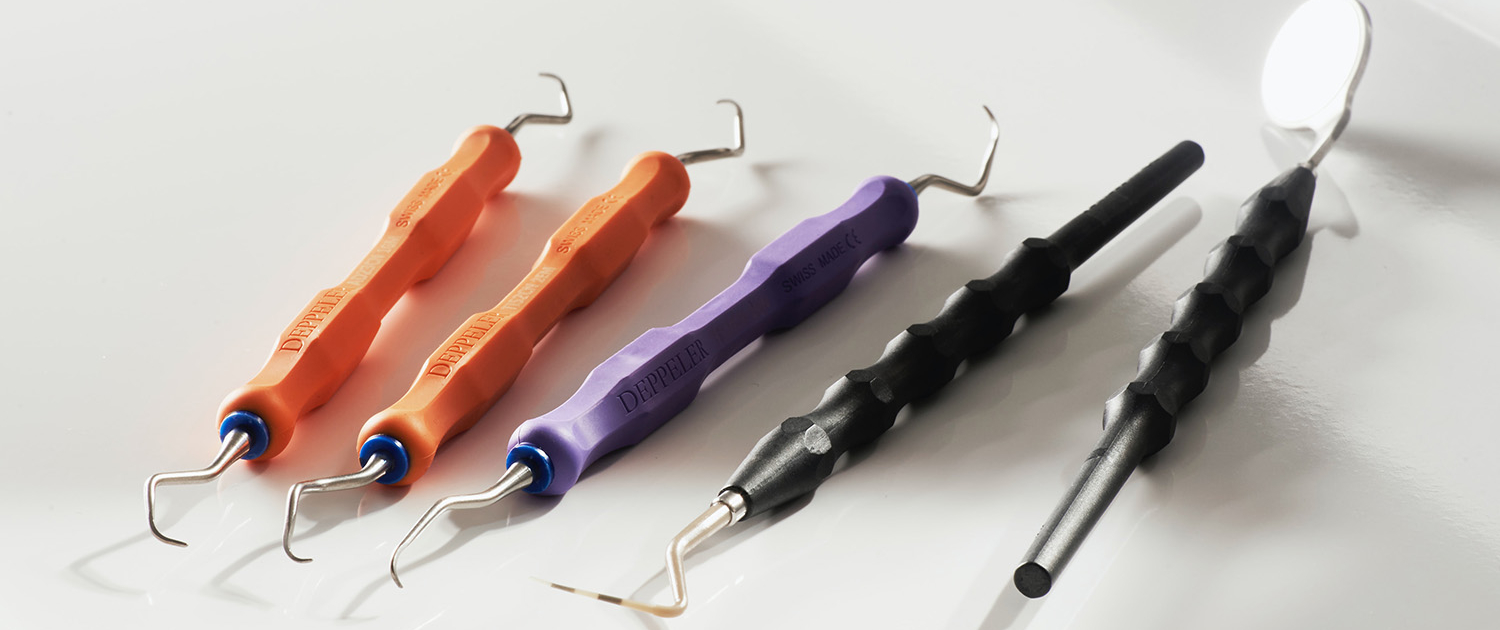Gingivitis, periodontitis and gingival recessions
Periodontology deals with the diseases of the gums and bone. The most common clinical conditions are gingivitis, periodontitis, and gingival recessions.
The periodontal disease is the most important cause of tooth loss. In developed countries, according to epidemiological data, one in two people of all ages develop some form of periodontal disease at some point in his / her life. At the age of over 65, almost 65% of the population has moderate or severe periodontitis.
What is gingivitis?
Gingivitis is the early clinical manifestation of periodontitis and is characterized by swollen red gums that bleed on brushing or spontaneously. Gingivitis is usually due to poor oral hygiene, the accumulation of microbial plaque, but can also be based on some medications such as antiepileptics or certain antihypertensives or hormonal disorders such as those that characterize pregnancy. Gingivitis is completely reversible with proper dental treatment. However, if left untreated, it can develop into periodontitis.
What is periodontitis?
Periodontitis is a chronic irreversible inflammation characterized by gradual destruction of the bone. The clinical symptoms of the disease are the mobility of the teeth, the change of their position, the bleeding and / or the swelling and / or the shrinkage of the gums, the bad breath, and the outflow of pus from the gums.
If the periodontal disease is not treated in time or if after the completion of its treatment, the patient does not follow proper oral hygiene and regular check-ups at the periodontist, the bone damage worsens, the tooth gradually loses its functionality and is often extracted.
What causes periodontitis?
Periodontitis is a multifactorial disease, meaning that there are many different factors that can affect the health of the tooth’s supporting tissues. However, the main and most common cause of periodontal disease is the accumulation of microbial plaque which is most often the result of poor oral hygiene. Other factors that can contribute to the onset and progression of the disease aresmoking, stress, genetic predisposition, systemic diseases such as diabetes, hypertension, rheumatoid arthritis, and hormonal disorders (pathological or physiological such as pregnancy and menopause).
The treatment of periodontal diseases
The treatment of gingivitis consists of 2 cleansing sessions that take place at 2 weeks from each other. Along with the mechanical removal of the plaque by the dentist or periodontist, the patient is given oral hygiene instructions which he / she is called to follow faithfully and meticulously for the treatment to have a successful outcome.
The treatment of periodontitis aims at stabilizing the disease and stopping the destruction of the tissues that support the teeth. The treatment is distinguished in a first non-surgical phase which, if necessary, is followed by a second surgical phase.
The non-surgical treatment (scaling and root planing) aims to treat the inflammation that is in the gums by removing both supra-gingival and sub-gingival microbial plaque deposits. Surgery is performed using ultrasound devices while scaling and root planingis performed with special hand tools that allow easy access to the root surface of the tooth. The treatment is painless and local anaesthesia is used.
An integral and very important part of the first phase of treatment is the oral hygiene instructions given to the patient and which must be followed faithfully in order to achieve the best possible healing of the periodontal tissues.
Surgical treatment is recommended in severe cases where the bone loss is greater than 5-6 mm. These are microsurgeries in which the area of interest is surgically opened so that the periodontist has immediate visibility. Then the tartar deposits (plaque) are removed from the root surfaces and depending on the anatomical features of the bone loss, the tissues can be regenerated.
How long does it take to treat periodontitis?
The non-surgical treatment in our office is carried out following the “full mouth disinfection” protocol which provides for its completion in 2 sessions. We then wait about 12 weeks before performing a thorough examination to evaluate the effect of the treatment – at this stage it is decided whether we need to proceed with surgery. During these 3 months the patient comes to the doctor’s office once a month in order to closely monitor his / her oral hygiene.
It should be emphasized that since periodontitis is a chronic disease we cannot talk about definitive cure. Therefore, the risk of recurrence is real. For this reason, when the active phase of treatment is completed, the patient enters the maintenance phasethat aims at maintaining the result. This phase provides for a personalized schedule of recalls and professional cleaning sessions. Successful maintenance also depends closely on the patient’s oral hygiene.
Gingival recessions
A gingival recession consists in theretraction of the gum and the consequent revelation of the root of the tooth. The recessions may be due to periodontitis, but most often they are the result of a traumatic brushing that is characterized either by the wrong technique or by the application of excessive pressure. In some cases, the recessions may be due to orthodontic treatment performed to resolve a serious crowding (teeth very crooked, teeth on top of each other).
The treatment of gingival recessionsis surgical with the use of grafts and special flaps. Treatment is recommended when the recession represents an aesthetic or functional (increased sensitivity of the root surface after cold or hot stimuli) problem for the patient.

